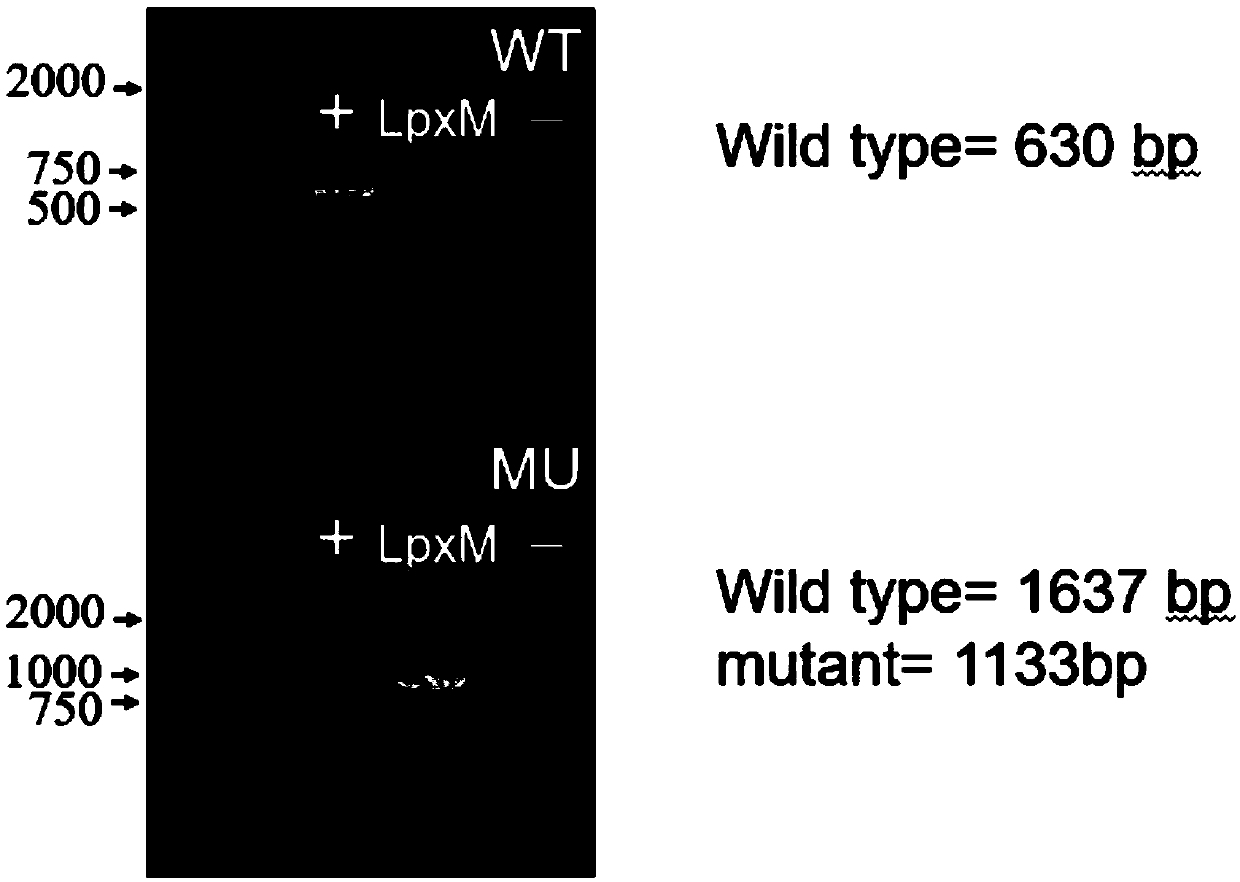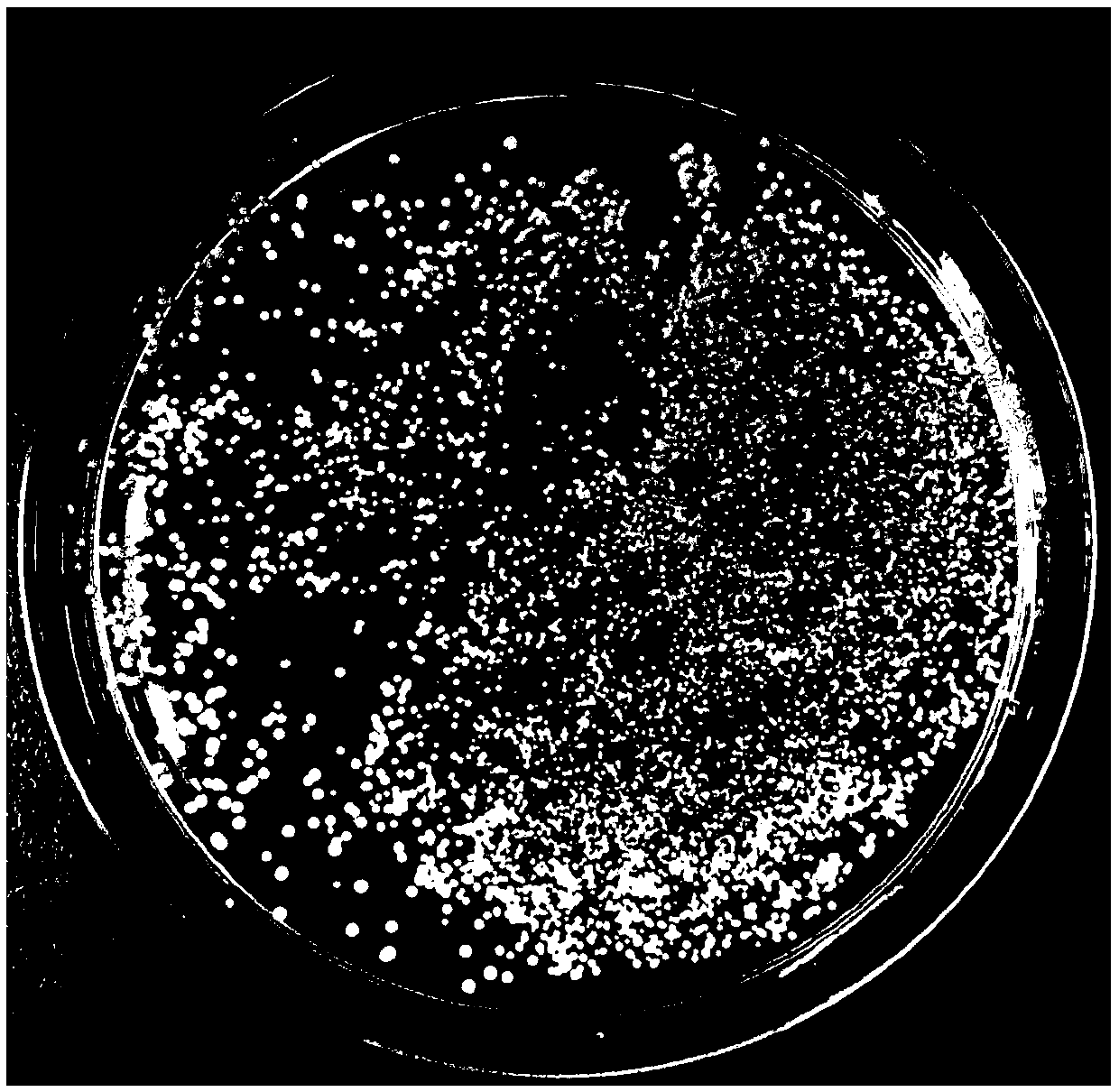Method for preparing gram-negative bacterium competent cells through outer membrane defects
A gram-negative, competent cell technology, applied in the field of microbial genetic engineering, can solve problems such as hindering the transfer of DNA molecules in competent cells, and achieve the effect of improving transformation efficiency and convenient operation.
- Summary
- Abstract
- Description
- Claims
- Application Information
AI Technical Summary
Problems solved by technology
Method used
Image
Examples
Embodiment 1
[0057] Example 1. Preparation of electroporation competent cells of Halomonas by knocking out outer membrane lipid A synthesis and modification related genes
[0058] After knocking out the genes related to outer membrane lipid A synthesis and modification in the genome of Halomonas bluephagenesis TD01, an LPS-deficient strain was obtained, which can become electroporation-competent cells after being treated with sucrose-glycerol buffer Plasmid containing the spectinomycin resistance gene.
[0059] The specific operation process is as follows:
[0060] Step 1. Use CRISPR-Cas9 technology to knock out the genes LpxA, LpxC, kdtA, LpxL, and LpxM related to the synthesis and modification of outer membrane lipid A in the genome of Halomonas bluephagenesis TD01, and obtain the outer membrane-deficient strain of the halophilic bacteria . details as follows:
[0061] 1. Knock out genes
[0062] The original expression vector used to express sgRNA and donor DNA is the pSEVA241 plasm...
Embodiment 2
[0080] Example 2. Preparation of electroporation competent cells of Halomonas by knocking out outer membrane lipid A synthesis and modification related genes, and transformation of plasmid containing gfp gene
[0081] Using Halomonas (H. bluephagenesis) TD01 as the starting strain, after knocking out lipid A synthesis and modifying related genes, the LPS-deficient strain of the strain was obtained, and the strain could become electroporation competent after being treated with sucrose buffer Cells can be electroporated with plasmids containing the spectinomycin resistance gene and the gfp gene.
[0082] The specific operation process is as follows:
[0083] Step 1. Use CRISPR-Cas9 technology to knock out the outer membrane lipid A synthesis and modification related genes LpxA, LpxC, KdtA, LpxL, and LpxM in the genome of H. bluephagenesis TD01 to obtain the outer membrane of H. bluephagenesis Deficient strains. The specific operation is the same as step one of embodiment 1.
...
Embodiment 3
[0090] Example 3. Preparation of Halomonas Electrotransfer Competent Cells by Inhibiting Outer Membrane LPS Synthesis and Modifying Related Genes
[0091] Halomonas campaniensis (Halomonas campaniensis) LS21 is a Gram-negative halophilic bacterium screened by our laboratory, which has a very good prospect for industrial production. After inhibiting the outer membrane LPS synthesis and modifying related genes, the LPS-deficient strain of the strain was obtained, and the strain could become electroporation competent cells after being treated with sucrose-glycerol buffer, and the plasmid containing the chloramphenicol resistance gene could be electroporated.
[0092] The specific operation process is as follows:
[0093] Step 1. Use sRNAi technology to inhibit the outer membrane LPS synthesis and modification related genes in the genome of H. campaniensis LS21, including MsbA, WzX, WzY, WaaL, WaaF, and WaaC, and obtain the outer membrane-defective type of H. campaniensis strain....
PUM
| Property | Measurement | Unit |
|---|---|---|
| thickness | aaaaa | aaaaa |
Abstract
Description
Claims
Application Information
 Login to View More
Login to View More - R&D
- Intellectual Property
- Life Sciences
- Materials
- Tech Scout
- Unparalleled Data Quality
- Higher Quality Content
- 60% Fewer Hallucinations
Browse by: Latest US Patents, China's latest patents, Technical Efficacy Thesaurus, Application Domain, Technology Topic, Popular Technical Reports.
© 2025 PatSnap. All rights reserved.Legal|Privacy policy|Modern Slavery Act Transparency Statement|Sitemap|About US| Contact US: help@patsnap.com



